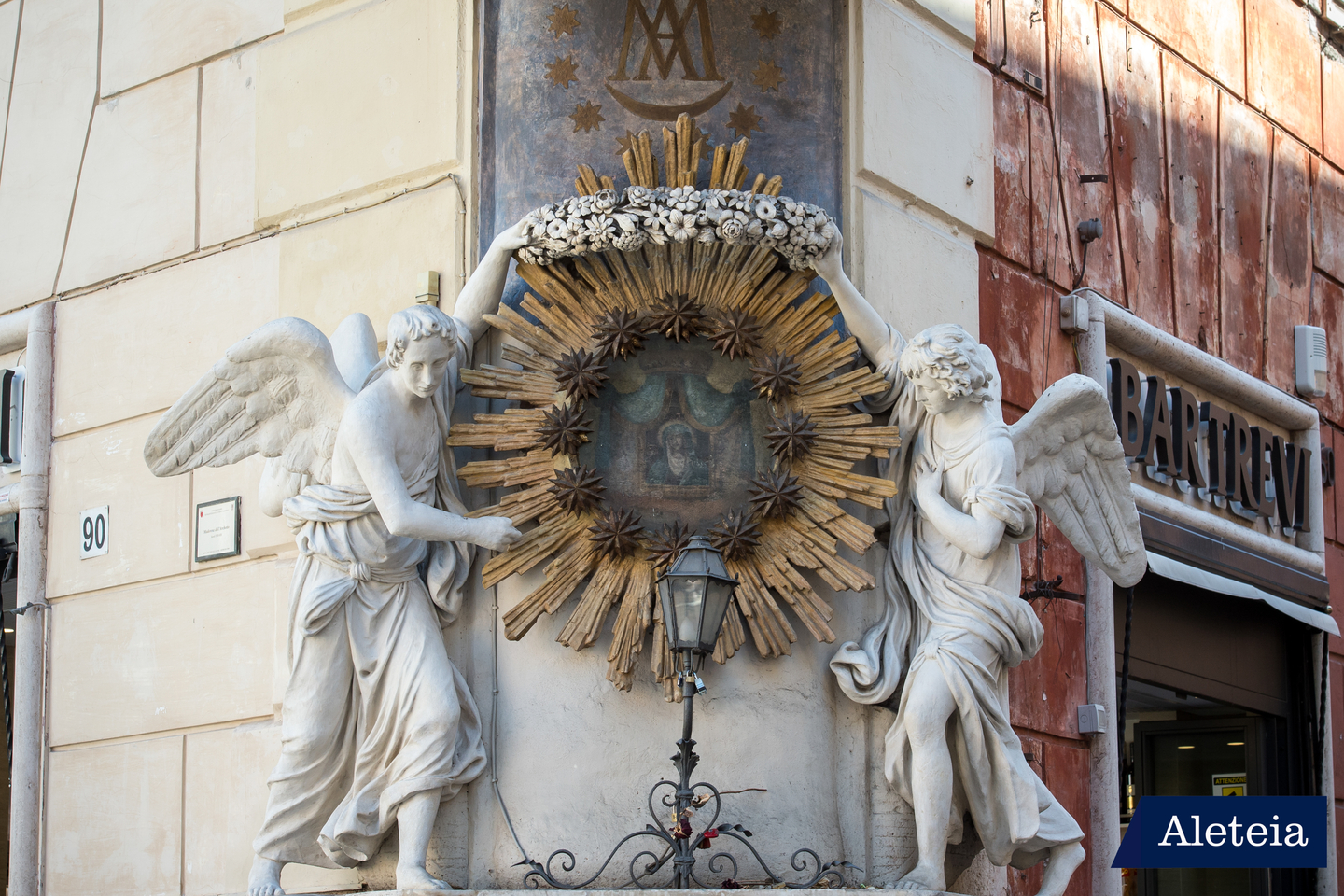Our May tour of Rome’s Madonnas brings us to the square of the Trevi Fountain.
We continue with our daily tour this month through a particular artistic expression of Marian devotion: Rome’s “Madonnelle” (“little Madonnas”). These are images of Mary—some of them miraculous—scattered throughout the streets and alleyways of the city. They are the object of much popular devotion. Follow the series here: Little Madonnas of Rome
In front of the sea god who reigns from atop his marble chariot amidst the waters of Trevi Fountain in Rome, there are two other equally intriguing images present at the two opposite corners of this famous square. They are “Madonnelle,” silently watching over the square and the neighboring streets. The most famous is, without a doubt, the one located on the corner of Castellani Palace, at the crossroads of Via del Lavatore and Via della Stamperia, in front of the 18th-century church of Saints Vincent and Anastasia.

It is a “Madonna of the Small Arch,” a copy of the original that moved its eyes in 1796, which is kept in a small shrine nearby. After that event, the miraculous image of the Madonna was copied and placed in new locations throughout the city; one of the most beautiful locations is Trevi Square.
Millions of tourists have passed under her eyes, have seen the image, nestled within its magnificent burst of golden rays decorated with stars, and perhaps have also photographed it. This shrine distinguishes itself by its size and by the beauty and elegance of its figures. Atop an elevated base, two young angels seem to walk in procession, carrying a star-studded burst of golden rays, which they silently present to the world. A canopy of heavy foliage amidst cherubic faces protects the small central fresco of the Madonna.
The shrine was probably erected at the end of the 18th century or the beginning of the 19th, shortly after the French occupation of the city, perhaps in reparation for the blasphemy perpetrated by the French troops, who took possession of, and profaned, the nearby convent of the Order of Clerics Regular Minor.
~
Follow the series here: Little Madonnas of Rome
See more articles like this at Aleteia’s Art & Travel section.

